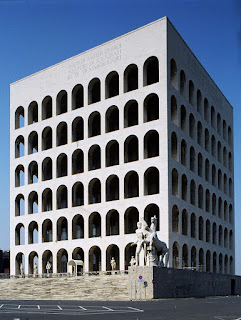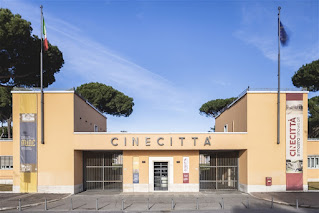Second in Spaghetti Western trilogy
The movie For a Few Dollars More, the second in what became known as the Dollars Trilogy of Spaghetti Westerns, was released for public viewing in Italy on this day in 1965.
The poncho-wearing Clint Eastwood became one
of the Western genre's most famous characters
Directed by Sergio Leone and starring Clint Eastwood as the Man with No Name, the film followed the unexpected success of the low-budget feature A Fistful of Dollars, released 15 months earlier, which overcame poor initial reviews to become, for a time, the biggest-grossing movie in Italian cinema history.
Released for Italian audiences as Per Qualche Dollaro in Più, the follow-up proved even more commercially successful than its predecessor. By 1967, it had displaced A Fistful of Dollars as the highest-grossing Italian production, generating 3.1 billion lire ($5 million) in ticket sales from more than 14 and a half million admissions.
Eastwood, who had been little known outside America before A Fistful of Dollars catapulted him to international fame, had been paid a reputed sum of just $15,000 for his role in the original film, from a production budget of only $200,000.
This time Leone had more money at his disposal after teaming up with Italian producer Alberto Grimaldi and Eastwood received $50,000, although co-star Lee Van Cleef, given the part of a rival bounty hunter after Charles Bronson turned the role down, was paid a rather more modest $17,000.
 |
| One of the original posters advertising the film in Italy |
Some critics were again derisive, dismissing the theme as corny, others accusing the director of glorifying violence and murder, yet For a Few Dollars More transfixed audiences with a gripping storyline, stunning cinematography, and powerful performances, as well as another brilliant musical score by Leone’s former school friend, the great Ennio Morricone.
The central plotline revolves around the rivalry between Eastwood’s character, on this occasion known as Manco, and Van Cleef’s former army officer, Colonel Douglas Mortimer, a fellow bounty hunter, with Volonté as a cold-blooded bank robber known as El Indio, who is just out of prison with a price on his head.
In common with the original, the film was shot on location in Spain rather than Italy. The original takes were all recorded without sound. Voices, sound effects and the musical score were all added later.
Leone completed the trilogy the following year with The Good, The Bad and The Ugly, which teamed Eastwood again with Lee Van Cleef but with Eli Wallach taking over from Volonté as the chief villain.
The budget this time was $1.2 million and box office revenue worldwide was almost as much as the first two parts of the trilogy combined. Eastwood and Leone’s careers went in opposite directions but both enjoyed considerable success.
Leone scored another huge western hit with Once Upon a Time in the West in 1968 and, despite turning down the chance to direct The Godfather, directed a great gangster epic of his own in 1984, with Once Upon a Time in America. Sadly, he died of a heart attack in 1989 at the age of 60.
Eastwood went on to enjoy countless box office successes as an actor before becoming an Oscar-winning director, remaining active even into his 90s.
Travel tip:
The arches of the Palazzo della Civiltà
Italiana echo those of the Colosseum
Sergio Leone, born in Rome, died there in 1989 when he suffered a fatal heart attack in the villa he used to entertain friends in the city’s EUR district, the complex to the south of central Rome that was originally developed to host the 1942 World's Fair - the Esposizione Universale Roma - which was cancelled because of the Second World War. Mussolini’s modern city within a city was designed by a team of prominent architects, headed by Marcello Piacentini and including Giovanni Michelucci. The designs combined classical Roman elements with Italian Rationalism in a simplified neoclassicism that came to be known as Fascist architecture. The Palazzo della Civiltà Italiana, which has become known as the “square colosseum”, is regarded as the building which is the most symbolic of EUR. Designed by Giovanni Guerrini, Ernesto La Padula, and Mario Romano, it draws inspiration from the Colosseum with its rows of arches, while its square shape and stark whiteness are reminiscent of metaphysical art.
 |
| The historic entrance to the Cinecitta film studios in Rome, in its heyday the largest in Europe |
The Italian film industry for many years revolved around Cinecittà, the Rome film studio that is the largest in Europe, spreading over an area of 100 acres with 22 stages and 300 dressing rooms. Situated six miles south of the city centre, like EUR it was built during the Fascist era under the personal direction of Mussolini. The studios were bombed by the Allies in the Second World War but were rebuilt and used again in the 1950s for large productions, such as Ben Hur. These days a range of productions, from television drama to music videos, are filmed there. The complex contains a permanent exhibition about the history of the studio, within which a special hall is devoted to the work of Sergio Leone, who worked at Cinecittà in the early stage of his career as an assistant director on several large-scale international productions, notably Quo Vadis (1951) and Ben-Hur (1959).
Also on this day:
39: The birth of Roman emperor Titus
1572: The death of architect Galeazzo Alessi
1962: The birth of politician Alessandra Mussolini
1991: The birth of tennis star Camila Georgi